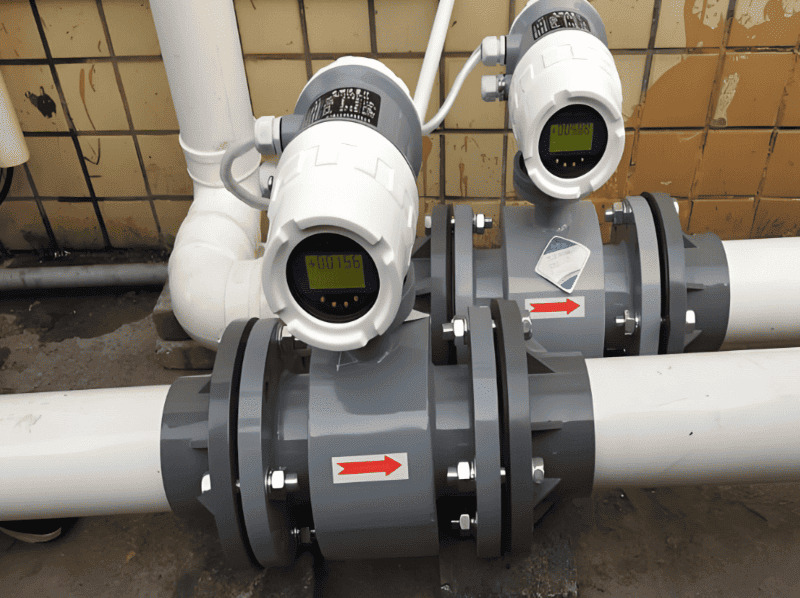Flow Meters for Modern Float Glass
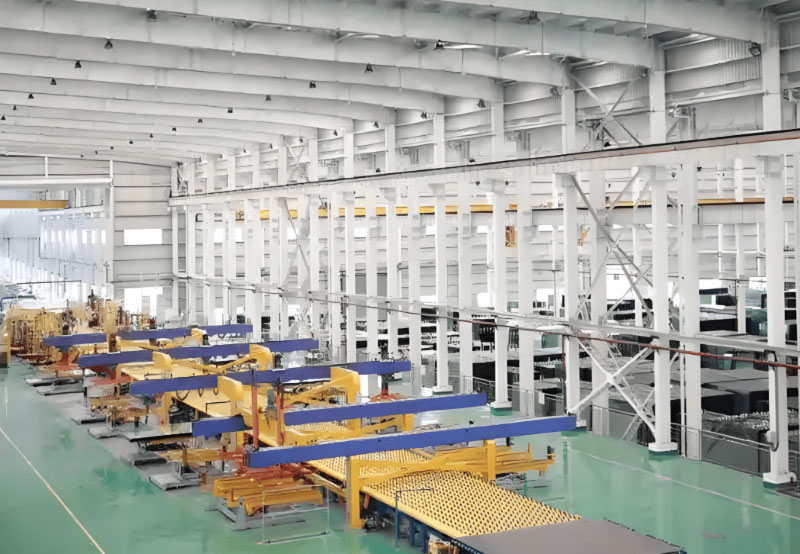
Float Glass Industry
Glass manufacturing—especially
modern float glass—runs on precise utilities. From potable water on the main
Marafiq pipeline to cooling-water loops, from natural gas and LPG to oxygen,
nitrogen, hydrogen and compressed air, reliable
flow measurement keeps
furnaces stable, tin baths safe, and quality consistent. This guide explains
which
industrial flow meter types fit each line, how to size them (4″,
8″, 16″, 20″ common in plants), and what to consider for
accuracy,
temperature, and maintenance. If you’re searching for “
best flow meter
for water,” “
natural gas flow meter,” “
compressed air flow meter,”
or “
oxygen flow meter,” you’re in the right place.
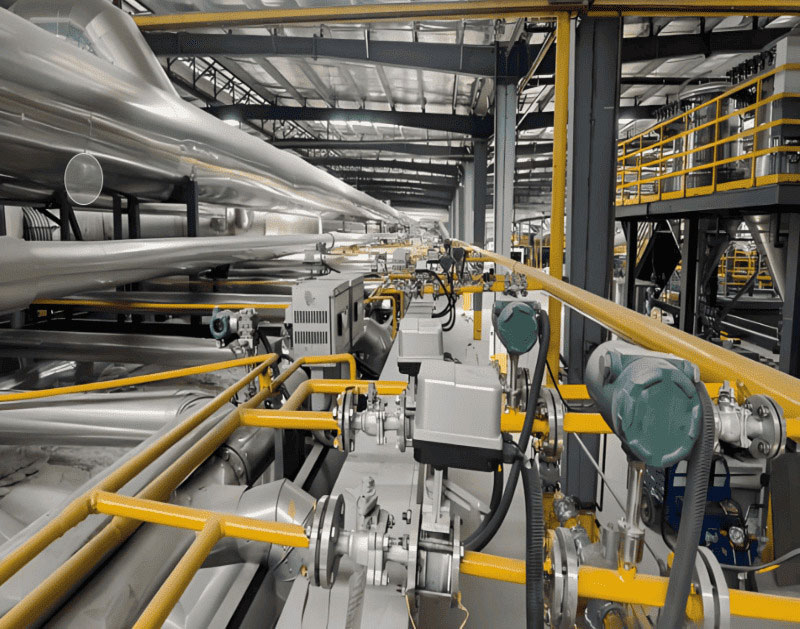
Industrial Flow meter
Why
flow meters matter in glass plants
-
Process stability: Correct fuel-to-air and O₂ enrichment ratios maintain
furnace temperature uniformity and reduce defects.
-
Utilities optimization: Monitoring cooling tower make-up, CT blowdown, and closed-loop
circuits cuts water and energy costs.
flow meter for IWW (industrial wastewater) discharge
-
Safety & compliance: Accurate flow on IWW (industrial wastewater) discharge supports
environmental reporting.
-
Quality control: Consistent flows to the tin bath protect surface quality and
minimize inclusions.
Quick
matches: line → recommended flow meter
Potable water (4–8″, up to 60
°C):
-
Best: Electromagnetic
flow meter (mag meter)—no pressure loss, high accuracy on conductive
liquids, ideal for main potable line, “mirror” and “pattern” lines, cooling-tower make-up, and closed-loop expansion tank.
-
Alternate: Ultrasonic
transit-time for clamp-on retrofits where shutdown is difficult or liquid turbine flow meters
RO product water (4″, up to 50
°C):
-
Best: Liquid turbine flow meter or vortex flow meter for low conductivity and corrosion
resistance; verify RO conductivity vs. meter spec.
-
Alternate: stainless steel rotameter .
Cooling water—open loop
(8–16″) & closed loop (20″, up to 50 °C):
-
Best: Mag
meters for main network and N₂/O₂ cooling branches; choose
IP68 for pits, large sizes with welded flanges.
-
Alternate: Ultrasonic on very large lines or where pressure drop must be zero.
IWW water: discharge to
Marafiq & CT blowdown (4″, up to 50 °C):
-
Best: Mag
meter with abrasion-resistant liner (e.g., hard rubber) or Teflon liner for corrosive liquid and full-bore
grounding; add bi-directional capability if needed.
-
Compliance tip: Pair with data logger for wastewater flow reporting.
Natural gas (8″) & LPG/SNG
(8″) to furnace gas room (up to 60 °C):
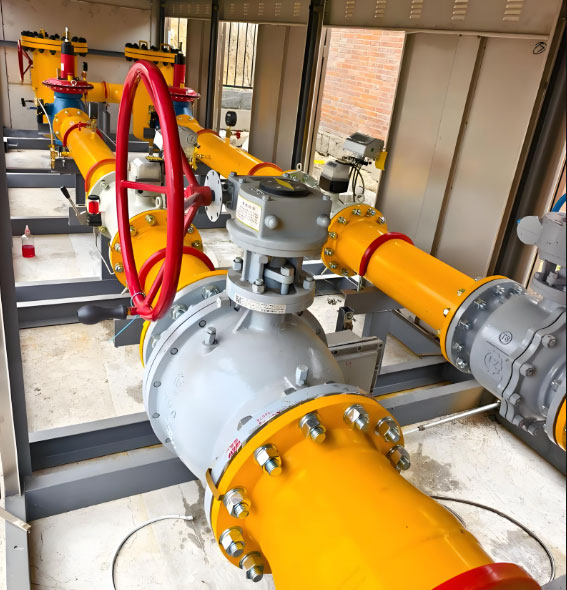
Natural gas flow meter & LPG/SNG (8″) to furnace gas room
-
Best: Gas turbine flow meter for high-accuracy custody/transfer-grade measurement
with low pressure loss.
-
Alternate: Vortex
flow meter (robust, lower cost) on clean, dry gas; consider thermal mass flow meter low cost gas flow meter for large pipeline sizes.
Oxygen to OxiBoost (4″, up to
60 °C):
-
Best:
 (direct mass flow, no pressure/temperature
compensation) or Coriolis for highest accuracy.
(direct mass flow, no pressure/temperature
compensation) or Coriolis for highest accuracy.
-
Note: Ensure O₂-clean
materials and approvals.
Nitrogen to tin bath (4″, up
to 60 °C):
-
Best: Thermal
mass or vortex with pressure/temperature compensation for
stable N₂
blanket control.
Hydrogen to tin bath (4″, up
to 60 °C):
-
Best: Coriolis
mass flow meter—excellent for H₂ with changing density;
supports precise tin-bath atmosphere ratios, or option with vortex flow meter and variable area flow meter.
-
Safety: Use Ex-proof transmitters and H₂-compatible seals.
Compressed air from
compressors #1–#3 (4″, up to 60 °C):
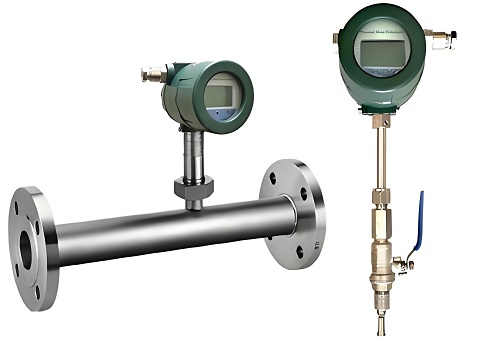
Thermal mass flow meter
-
Best: Thermal
mass flow meter for compressed air to track baseline, leaks, and
specific energy (kWh/Nm³).
-
Alternate: Vortex if you prefer velocity measurement with robust construction.
Sizing
& accuracy: get it right the first time
-
Line size & velocity: Most 4″–20″ lines in glass plants target 0.5–3 m/s for liquids and 15–30
m/s for gases. Keep Reynolds numbers within the meter’s spec for
accuracy.
-
Straight-run requirements:
-
Mag: typically ≥5D
upstream / ≥3D downstream (check vendor).
-
Vortex: ≥15D/5D common.
-
Ultrasonic: follow path
count guidance; double- or four-path for big pipes.
-
Mag & ultrasonic
(liquid): ±0.2–0.5% of rate.
-
Ultrasonic (gas, custody): ±0.5–1.0%.
-
Thermal mass (air/gases): ±1–2% of reading typical.
-
Coriolis (H₂,
small lines): ±0.1–0.2% of mass flow.
-
Temperature: You listed up to 50–60 °C—well within most meter limits. Verify
lining, gasket, and electronics ratings.
-
Conductivity (for mag
meters): Ensure >5–20 µS/cm (vendor-specific).
RO product may require PTFE liners or ultrasonic alternative.
Installation
best practices for high-uptime
-
Mounting: For liquids, install mags full pipe, preferably horizontal with electrodes at 3 and 9 o’clock to avoid gas/solids interference.
-
Grounding & shielding: Use grounding rings on non-conductive linings and shield signal
cables away from VFDs.
-
Isolation valves &
bypasses: Enable hot-swap of transmitters and
maintenance without stopping production.
-
Power & outputs: Standardize on 24 VDC where possible; use 4–20 mA + HART/Modbus for DCS integration; consider pulse outputs for totals.
-
Ingress protection: For pits and outdoor networks, pick IP67/IP68 and
epoxy-coated bodies.
-
Hazardous areas: Furnace-gas, H₂,
O₂
zones require ATEX/IECEx or local approvals; pick intrinsically
safe barriers where needed.
Cost-saving
use cases you can replicate
Cooling-tower optimization
Install mag meters on
make-up and
blowdown lines to
calculate
cycles of concentration and reduce water and chemical
costs.
Compressed-air leak program
Thermal mass meters at the
compressor headers and at key production
zones reveal leaks and enable
kWh/Nm³ benchmarking.
Fuel-to-air ratio control
Pair
ultrasonic gas meters (NG/LPG) with
oxygen mass meters to stabilize furnace heat profiles and lower specific fuel consumption.
Tin-bath atmosphere control
Coriolis (H₂) and
thermal mass (N₂) maintain precise %H₂/%N₂, improving surface finish
and reducing rejects.
Regulatory reporting
IWW discharge totals via mag meters simplify environmental reports
and audits.
Author: Silver Automation Instruments — Engineering Team
Practical instrumentation specialists with 10+ years of field experience in flow, pressure, and level measurement.
Expertise in gas turbine, Coriolis, magnetic, and ultrasonic meters. CE & ISO 9001 processes.
Website: silverinstruments.com |
Email: technician@silverinstruments.com


